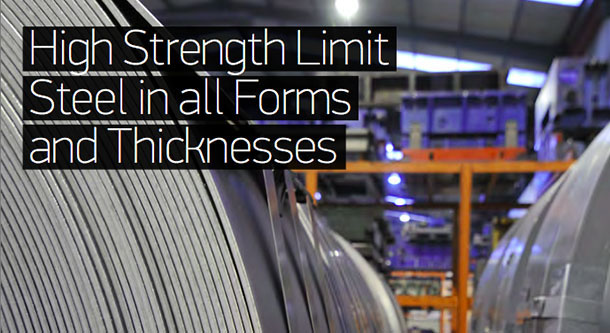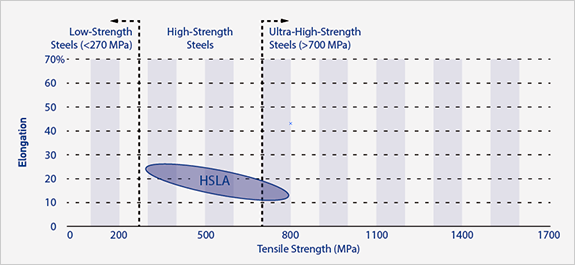

Demand for lightweight robust quality vehicles, cost reductions and competition have prompted the development of new grades of steel in recent years.
High- and ultra-high-strength steel play a substantial role in the sheet metal parts design concepts, as higher strength material enable the reduction of the thickness and increase the robustness of the components used.
In high strength steels for cold forming, the characteristics of strength, elastic limits and tensile strength are achieved with a combination of microalloying and process control during their production process at the mill. Steel with a very reduced grain size is obtained, which greatly improves the toughness, the elastic limit and tensile strength.
An increase in strength however results in reduced formability, therefore when manufacturing components with complex geometries, thick material or when using maximum-strength materials, it's particularly important to coordinate material and forming process. Higher strength steels require increased attention to the chosen process and tool design. When forming these steels comparing to conventional steels there are more points to be kept in mind, for instance, compensation for the springback, wrinkling or flange formation.
Experience together with digital forming-analysis of component elongation and strain hardening have become key in order to optimize the manufacturing process and avoid risk while forming these types of steel.
In geneal, microalloyed, thermomechanically rolled steels are easily welded. However, the welding parameters must be systematically adapted, depending on the procedure selected and the materials to be joined.

